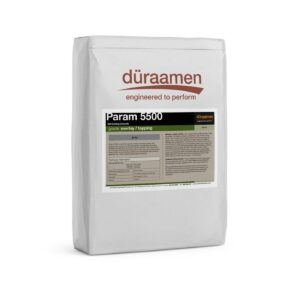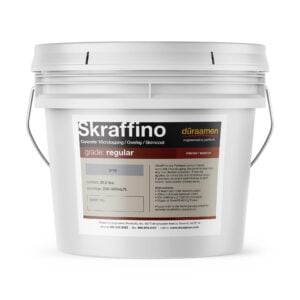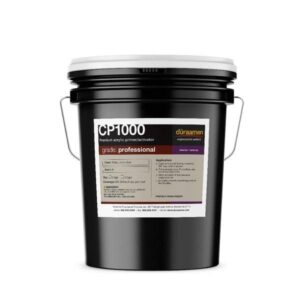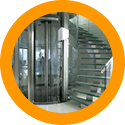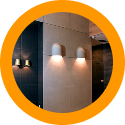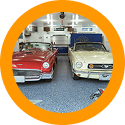What is the difference between broadcast vs troweled decorative quartz flooring?
Let’s first answer that question by explaining what a decorative quartz flooring system is. Decorative Quartz flooring is any system in which quartz aggregate is embedded in a resinous coating, which could be epoxy, polyurethane, MMA or Polyaspartic polyurea. The result is an attractive and highly durable finish that is perfect for large expanses of flooring where a rugged floor is needed. This system is often the first consideration for high traffic areas such as warehouse flooring, showrooms and garages. In residential settings it is useful in kitchens or bathrooms. For commercial applications, the uses are practically endless. Consider this rugged but beautiful flooring for hospitals, restaurants, wineries, breweries, schools and many other applications.
There are two ways to apply quartz flooring. One is to broadcast it while the other is to trowel it on. Most contractors who offer quartz flooring will offer both applications. Either way it is applied you will end up with the same result: a seamless, durable floor that can be almost any color or style.
Broadcast quartz flooring means that the applicator manually tosses the quartz aggregate onto a floor that is coated with wet epoxy. Troweled quartz flooring means that the quartz aggregate is mixed with the wet epoxy and the epoxy is applied by hand with a trowel. Over large expanses, a power trowel can be used. Because of the edge of the trowel applying the epoxy mortar, the trowel method results in a slightly smoother finished floor. When the quartz aggregate is tossed on, it sticks out of the epoxy mortar just slightly.
There are some other slight differences as well. The aggregate in the trowel application is larger, so whatever color is chosen for the quartz aggregate in the troweled-on application will be more noticeable and eye-catching. Broadcast aggregate can still be colorful, but it is smaller and therefore slightly less eye-catching.
The troweling results in more of the aggregate being covered up or embedded more fully in the epoxy mortar. This results in a look that is more speckled. Broadcasting results in more of the aggregate surface being exposed, so the look shows off more of the aggregate color and has a more single-color look as opposed to speckling.
Troweling is also a more durable option, which might be better if your floor area will have forklift traffic or other heavy use such as an automobile showroom or garage. Because the broadcast system is slightly “bumpier” on the surface, the long-term abrasion resistance is slightly less on the broadcast application than with a troweled application. Troweled on applications are generally applied thicker, at a rate of 1/4-inch to 3/16-inch as opposed to 1/8-inch thick for broadcast systems. This thickness also contributes to troweled-on applications being more durable.
Still, despite these differences, the methods are very similar in the end result and you will get a durable floor either way. If endurance is of primary importance to your project, choose troweled on.
Remember also, that the floor coating that goes over this quartz flooring system has a great deal to offer the durability of the final project. The floors can be finished with specially formulated coatings to be resistant to chemicals, mildew and ultraviolet light. The coating can offer slip-resistance in variable levels.

To prepare a floor for a troweled quartz flooring system, the floor should be prepped by grinding or shot blasting so the surface is clean of any contaminants as well as roughened. The rough surface will be ready to accept the epoxy primer. Then, when the floor is ready, the quartz is mixed with the epoxy, to form the epoxy mortar. This has the consistency of heavy wet sand and is then applied to the floor by hand using a hand trowel.
When using power trowels for burnishing overlays or microtoppings, it is important to consider the weight of the equipment being used. Conventional power trowels may be too heavy for this purpose and can potentially compact the concrete to a point where it cannot accept stains. Therefore, opting for lightweight power trowels designed specifically for finishing overlays and microtoppings can be advantageous. These lighter machines, such as the HoverTrowel which weighs 40 pounds, are suitable for achieving a burnished finish on overlays without compromising the concrete’s ability to accept stains. This allows for the flexibility to apply additional treatments such as staining even after the burnishing process. Ultimately, the weight of the power trowel used plays a crucial role in determining the success of burnishing overlays or microtoppings while maintaining the ability to enhance the surface with staining or other treatments.
It is generally a faster installation process to apply quartz by trowel. This is because the epoxy mortar and the quartz aggregate are applied in one step. Also, adding designs into the mortar is usually easier with a troweled-on application, because of the thickness. Another reason is that it is easier to get a more solid delineation between colors with a troweled-on application than with the tossing method of broadcasting.
The difficulty in the installation of a troweled-on floor is that the thickness of the floor must be kept level across the entire floor even though it is being done by hand. This takes some skill and experience. If you have several people troweling across a large area, you will likely see some unevenness in the final finished floor. This can be resolved by using a power trowel over a large area rather than hand-troweling.
Burnished Finishes
Achieving a burnished look using troweling techniques involves repeatedly and vigorously troweling the coating until fine steel particles are embedded into the floor, creating a distinct shiny appearance. During the process of burnishing, the troweling action should be intense enough that the trowel produces a distinctive sound akin to ‘wing, wing.’ Power trowels are recommended for ease of achieving a burnished finish, to the extent that the challenge shifts to avoiding unintended burnish marks on areas where this specific look is not desired. Some manufacturers offer special plastic blades for power trowels to help eliminate unwanted burnishing effects.
A Word on Skip Troweling and Knockdown Finishes
Skip troweling is a texturing technique used in finishing drywall or plaster surfaces. It involves applying a smooth base coat and then using a trowel to skip across the surface while adding a small amount of topping material. This process leaves raised patterns or patties with flat, smooth surfaces on the wall. The additional material is applied in a way that creates texture but still maintains a mostly smooth surface compared to other textured finishes.
In contrast, knockdown finishes involve spraying texture onto a surface and then flattening or knocking it down using a trowel or similar tool. This results in a textured surface with a more consistent, flattened appearance compared to skip troweling, which creates raised patterns. While both skip troweling and knockdown finishes are textured wall techniques, skip troweling produces a more prominent raised texture while knockdown finishes result in a flatter, more subdued texture. Both techniques can be enhanced by using stencils to create intricate designs on the surface.
It should be noted that knockdown finishes are sought-after textures known for their anti-slip properties, making them ideal for outdoor surfaces. To achieve these finishes, a lumpy coating material is sprayed onto the surface using a hopper gun. Subsequently, a steel trowel is used to flatten and smooth out the raised parts of the lumps, creating a textured appearance that adds both style and functionality to the surface.
Additional Troweling Techniques
Another troweling technique that’s good to have in one’s toolkit is slope troweling. Slop troweling is a technique that offers various opportunities for creating unique and artistic effects on surfaces. By using the full surface of a steel trowel and lifting it after each pass, individuals can achieve a range of creative outcomes. Some effects that can be achieved through slop troweling include the creation of faux stone surfaces. This technique allows for the application of individual rocks in place, leaving joints between them that can be later mortared. Additionally, slop troweling can be used to make grout lines between stones, which can be done using stencils, strapping tape, or even by hand carving. Another creative possibility with slop troweling is the simulation of faux wooden planking. By dragging the trowel in a line while slightly lifting it to create suction, a realistic wood grain effect can be achieved.
To create marbled or cloud-like color effects on concrete surfaces, several techniques can be used. One approach involves broadcasting color hardeners onto a topping and troweling them in. Another method is to spray or dash pigmented water onto the surface and then trowel it. Additionally, a unique technique involves mixing two or three batches of an overlay or microtopping with different integral colors or different loadings of the same color. These techniques allow for the creation of visually appealing marbled or cloud-like color effects on concrete surfaces.
Adhering to Manufacturers’ Recommendations
It is crucial to abide by the manufacturer’s recommendations when working with cementitious overlays due to the specific design of each product. Manufacturers engineer these overlays to achieve particular finishes, and deviating from their guidelines can lead to various issues. Primers play a critical role in ensuring the bond and longevity of the overlay, as indicated by contractors and backed by manufacturers’ tests. Disregarding the necessity of primers might result in poor adhesion and premature failure of the overlay, ultimately causing trouble for the project and requiring costly repairs. Therefore, following the manufacturer’s recommendations, including the proper use of primers, is essential for ensuring the success and durability of cementitious overlay applications.
Prepping A Broadcast Quartz Floor
Prep for a broadcast quartz floor system is similar to that of the troweled-on finish. However, once the primer is applied, then a binder resin is applied. The quartz aggregate is then tossed on (the applicator is wearing special shoes with spikes to allow them to walk on the floor without leaving marks) until it is completely coated. After this dries overnight, excess aggregate will be removed with a broom and vacuum. A second application may be applied in the same way, with the excess vacuumed up again. The finished application is then protected with a top coat of sealer.
Duraamen Industrial and Polished Concrete Flooring Products are designed to provide labor-saving and long-lasting flooring solutions. Talk to an expert about your flooring challenges call +1 973-230-1301 or email us.
